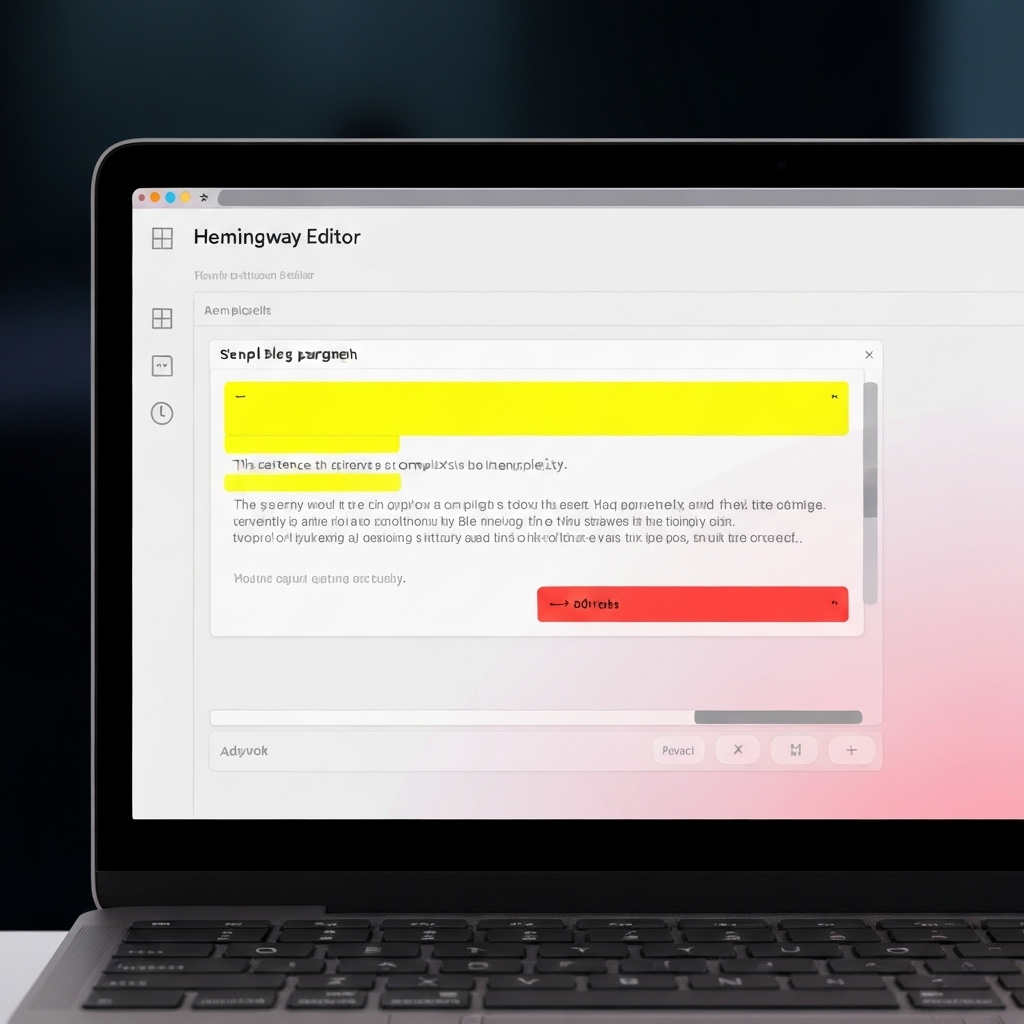AI Writing Tools for Bloggers Free: The Best Options to Supercharge Your Content
AI Writing Tools for Bloggers Free: The Best Options to Supercharge Your Content
Artificial intelligence has transformed the way bloggers approach content creation, making it faster and more efficient than ever before. With AI-powered writing tools, bloggers can generate article ideas, draft compelling introductions, and even refine their tone—all at no cost. These tools leverage natural language processing to understand context and produce human-like text, significantly reducing the time spent on brainstorming and editing. For content creators on a budget, free AI writing assistants offer a practical solution to maintain consistency and quality across their blogs.
One of the standout benefits of free AI writing tools is their ability to enhance grammar and readability. Platforms like Grammarly offer basic AI-driven suggestions for sentence structure, punctuation, and word choice, helping bloggers polish their work effortlessly. Similarly, tools such as Quillbot provide paraphrasing and summarization features that are ideal for rephrasing content while preserving its original meaning. These functionalities not only improve clarity but also support bloggers in avoiding unintentional plagiarism.
Beyond grammar and style, AI tools can spark creativity by generating topic ideas and outlines based on simple prompts. For instance, Surfer AI offers limited free features that help identify trending topics and structure content for SEO optimization. This enables bloggers to produce relevant, search-friendly articles without extensive keyword research. By automating repetitive tasks, AI allows writers to focus on storytelling and audience engagement—key elements that drive blog success.
While premium versions often come with advanced capabilities, the free tiers of many AI writing tools are robust enough for everyday blogging needs. They democratize access to technology that was once available only to large media companies or professional writers. As AI continues to evolve, these tools will likely become even more intuitive and accurate, further leveling the playing field for independent bloggers. Embracing them today means staying ahead in a competitive digital landscape where speed and quality go hand in hand.
Why Use AI Writing Tools?
AI writing tools leverage natural language processing (NLP) and machine learning algorithms to analyze vast amounts of text data, enabling them to generate coherent and contextually relevant content. These technologies allow the tools to understand grammar, tone, and semantics, producing text that closely mimics human writing. For bloggers, this means access to real-time suggestions for sentence structure, vocabulary enhancement, and even full draft generation based on simple prompts. Platforms like OpenAI and Google Cloud Natural Language demonstrate how advanced NLP models can support content creation with high accuracy.
One of the most significant benefits for bloggers is the ability to overcome writer’s block and streamline the writing process. Instead of staring at a blank page, users can input a topic and receive well-structured paragraphs or outlines in seconds. This accelerates the drafting phase and allows creators to focus more on refining ideas and engaging their audience. Additionally, AI tools often include features for summarizing research, extracting key points from articles, and suggesting relevant sources—helping bloggers save valuable time during the pre-writing stage.
Beyond efficiency, AI-powered tools enhance readability by analyzing sentence complexity and recommending improvements for clarity and flow. Many platforms integrate style guides and tone detectors to ensure consistency across posts, which is essential for maintaining a professional blog voice. Tools such as Grammarly and Hemingway Editor exemplify how AI can refine writing quality while preserving the author’s intent.
Furthermore, several AI writing assistants offer built-in SEO optimization features, suggesting keyword placements, meta descriptions, and headings that improve search engine visibility. By analyzing top-ranking content, these tools help bloggers align their posts with current SEO best practices. When used effectively, AI doesn’t replace the blogger’s creativity—it amplifies it, making content more discoverable and impactful. Resources from Google Search Central provide insight into how SEO-friendly content can significantly boost online reach.

1. Grammarly: Polished and Professional Writing
Grammarly is a widely used AI-powered writing tool that helps users improve their writing through real-time grammar, spelling, and punctuation checks. Its free version is particularly popular among bloggers, students, and professionals who want to enhance the quality of their content without incurring costs. By integrating directly into web browsers and text editors, Grammarly provides instant feedback as you write, making it easier to catch errors before publishing. This seamless experience has made it a go-to choice for anyone looking to maintain clear and error-free communication.
In addition to basic proofreading, Grammarly's free tier offers valuable suggestions for improving sentence clarity and adjusting tone to suit different audiences. Whether you're writing a casual blog post or a more formal article, these insights help tailor your message effectively. The tool analyzes context and word choice to recommend phrasing that sounds more natural and engaging. While advanced features like plagiarism detection require a premium subscription, the free version still delivers substantial benefits for everyday writing tasks.
Grammarly’s ability to adapt to various writing styles makes it especially useful for content creators aiming to build credibility with their readers. By promoting clearer, more concise sentences, it supports better reader comprehension and retention. The platform continuously learns from vast datasets to refine its suggestions, ensuring high accuracy over time. For those interested in exploring its capabilities, more information can be found on the official Grammarly website.
2. Hemingway Editor: Simplify Your Style
The Hemingway Editor is a powerful writing tool designed to help bloggers and writers improve the clarity and readability of their content. By analyzing text for complex sentence structures, passive voice, and excessive adverb use, it encourages a more direct and impactful writing style. The editor uses a color-coded system to highlight areas that need attention—red for very hard-to-read sentences, yellow for hard, and green for easier sections—allowing users to quickly identify and revise problem areas. This focus on simplicity aligns with the writing principles of Ernest Hemingway, known for his concise and powerful prose.
One of the key benefits of the Hemingway Editor is its ability to make writing more accessible to a broader audience. By promoting shorter sentences and simpler language, it helps ensure that content is understandable to readers with varying levels of literacy. This is especially important in digital publishing, where clear communication can significantly affect engagement and retention. The editor also assigns a readability grade level, indicating the minimum education level needed to understand the text, which can be useful for tailoring content to specific audiences.
Beyond basic grammar checks, the Hemingway Editor emphasizes bold and confident writing by flagging weak word choices and unnecessary complexity. For example, it identifies adverbs like "very" or "really," which often weaken statements, encouraging stronger alternatives. While it doesn't replace human editing, it serves as an excellent first pass for refining drafts. Available as both a web app and a desktop application, it's a convenient tool for bloggers aiming to polish their work before publication. More information about its features can be found on the official Hemingway Editor website.

3. Google Bard (now Gemini): Brainstorming and Research Made Easy
Google's AI-powered tool, now known as Gemini, offers bloggers a powerful resource for streamlining content creation. Formerly called Bard, this generative AI leverages Google's extensive search index and real-time data to assist with brainstorming blog topics, generating structured outlines, and identifying key points from lengthy articles. Its integration with Google's knowledge ecosystem enables accurate and contextually relevant suggestions, making it particularly useful for creators seeking timely and well-informed content.
One of Gemini’s standout features is its ability to summarize complex information quickly and clearly. Bloggers can input long-form articles or research papers and receive concise summaries, saving valuable time during the research phase. Additionally, the tool can rephrase sentences or paragraphs to improve readability and flow, helping writers refine their drafts without losing the original meaning. These capabilities are especially beneficial for those managing tight deadlines or producing content across multiple niches.
Gemini also supports idea generation by offering creative prompts and angles based on trending searches and user input. This helps bloggers discover unique perspectives and avoid repetitive content. By drawing from authoritative sources across the web, it ensures that suggested facts and statistics are grounded in reliable information. Users can verify these references through direct links, promoting transparency and trustworthiness in the writing process.
As part of the broader Google Workspace environment, Gemini is designed to work seamlessly alongside tools like Google Docs and Search, enhancing productivity for content creators. Its continuous updates reflect improvements in natural language understanding and factual accuracy, positioning it as a dependable assistant for modern blogging workflows. For more details on its capabilities, visit the official Gemini blog by Google.
4. QuillBot: Paraphrase and Expand with Ease
QuillBot is a powerful AI-driven writing assistant designed to help users rephrase and refine their content without losing the original meaning. By leveraging advanced natural language processing, it offers multiple paraphrasing modes that cater to different tones and styles, making it ideal for bloggers looking to enhance clarity and avoid redundancy in their drafts. Whether you're polishing an introduction or expanding a brief section, QuillBot adapts to your writing needs with ease.
The tool’s free version provides access to essential features such as standard rewriting and a built-in grammar checker, allowing users to improve sentence structure and correct errors in real time. This combination makes QuillBot especially useful during the editing phase of blog writing, where precision and readability are key. Its user-friendly interface ensures a smooth experience, even for those who aren’t tech-savvy.
Bloggers appreciate QuillBot not only for its efficiency but also for its ability to maintain the integrity of their voice while offering fresh phrasing alternatives. It can help overcome writer’s block by suggesting new ways to present ideas, ultimately saving time and boosting productivity. For more information on how AI tools are shaping modern writing, visit TechRadar's guide to AI writing tools.

5. Notion AI (Free Plan Available): Organize and Write in One Place
Notion AI offers bloggers a seamless blend of organization and intelligent content creation, making it an ideal tool for managing every stage of the blogging process. From planning ideas to publishing drafts, users can leverage AI-powered features such as automated summarization, smart writing suggestions, and task generation. The platform's flexible workspace allows bloggers to structure their projects using databases, kanban boards, calendars, and more—all customizable to fit individual workflows. This integration helps maintain consistency and clarity across content strategies.
One of the standout advantages of Notion AI is its generous free plan, which provides full access to core functionalities needed by emerging and established bloggers alike. Users can create detailed content calendars, draft and refine blog posts with AI assistance, and convert meeting notes or research into concise summaries. Features like AI-generated to-do lists help streamline productivity, ensuring important tasks are prioritized and deadlines are met without overwhelming the user.
The adaptability of Notion’s ecosystem means that as a blog grows, the workspace can scale accordingly—supporting team collaboration, editorial calendars, and even audience engagement tracking. Because everything resides in one centralized environment, switching between brainstorming, writing, and project management becomes effortless. Bloggers can link related pages, embed multimedia, and use templates to maintain a professional and organized presence.
For those looking to optimize their content workflow, Notion AI combines practicality with innovation. Its AI tools reduce time spent on repetitive tasks while enhancing creative output. More information about its capabilities can be found on the official Notion AI product page, where users can explore tutorials and use cases tailored to writers and creators.
Conclusion: Empower Your Blogging Journey
Free AI writing tools have revolutionized the way bloggers approach content creation, offering support in grammar refinement, tone adjustment, and idea generation. Tools like Grammarly help eliminate linguistic errors and improve readability, ensuring that posts are polished and professional. Similarly, the Hemingway Editor highlights complex sentences and passive voice, encouraging clearer, more direct writing—ideal for engaging online audiences.
Platforms such as Google Gemini and QuillBot provide advanced paraphrasing and content expansion capabilities, allowing writers to reframe ideas efficiently while maintaining originality. These tools are particularly useful when overcoming writer’s block or repurposing existing content without sacrificing quality. Notion AI further enhances productivity by integrating AI-powered writing assistance directly into a versatile workspace, enabling seamless drafting, editing, and organizing of blog content all in one place.
While AI cannot replicate human creativity or authentic voice, it significantly reduces the time spent on drafting and editing, letting bloggers focus more on strategy and storytelling. By acting as digital co-pilots, these tools empower both novice and experienced writers to maintain consistency and elevate their content standards. As AI continues to evolve, its role in democratizing high-quality writing remains one of the most impactful developments in modern digital publishing.
